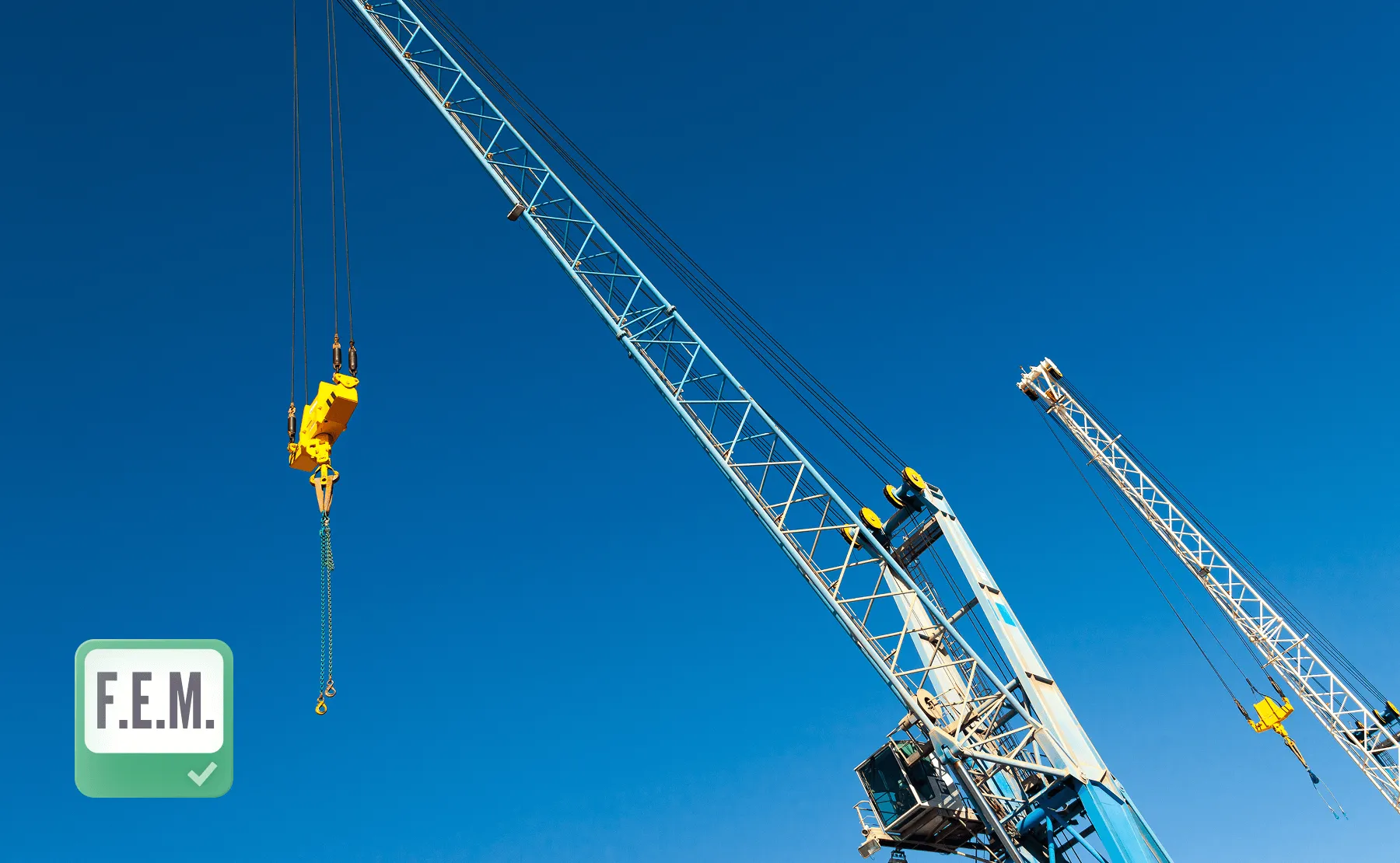Perform static and fatigue checks directly in your .modfem, .fem, or .wbpj models without manual setup
Classify weld types (K0–K4, W0–W2), load spectrums (P0–P3), and stress cycles (B0–B10) using built-in logic aligned with F.E.M. 1.001 guidelines.
Use ASD method and optional Rainflow Counting for accurate fatigue life evaluation across all directions (X, Y, Z, XY, YZ, ZX).
Switch between Hot Spot or Weld Stress methods for fatigue analysis, depending on your project needs.
Automatically generate fatigue and static check documentation, including safety factors, K-factors, and utilization values — ready for review or certification.

F.E.M. 1.001 (3rd, 1998) – Rules for the Design of Hoisting Appliances – is issued by the Fédération Européenne de la Manutention (FEM) to establish a unified method for evaluating steel structures in cranes and lifting equipment.
Originally developed to improve safety and consistency across the lifting equipment industry, the standard covers two major design checks:
Applicability: F.E.M. 1.001 is primarily used for the structural design and analysis of cranes and hoisting equipment operating under cyclic loading.
Verification in SDC Verifier: The standard is supported natively across Ansys Mechanical, Femap, and Simcenter 3D, with full automation for all classification rules, safety factors, and utilization calculations.
ABS Standards
AIJ Standards
AISC Standards
API Standards
ASME Standards
Australian Standards
British Standards
Bureau Veritas Standards
DIN Standards
DNV Standards
DVS Standards
EN 13001 Standard
Eurocode 3
Eurocode 9
F.E.M. 1.001
FKM Standard
IACS Standards
ISO
Lloyd’s Register (LR) Standards
NORSOK Standards
VDI Standards
F.E.M. 1.001 is focused on the structural design and fatigue assessment of cranes and lifting equipment, including their steel support structures.
Fatigue checks in SDC Verifier follow the Allowable Stress Design (ASD) method. Fatigue summation is supported using defined weld types, material categories, and load spectra across fatigue groups.
You can define combinations of Load Spectrum classes (P0–P4) and Class of Utilization (B0–B10). These automatically determine the appropriate Element Group for fatigue checks based on the standard’s lookup table.
Yes, Rainflow fatigue summation is available for Enterprise license users and can be performed using either Weld Stress or Hot Spot Stress as input.
Yes, you can customize safety factors, stress limits, weld types, and classification settings through the SDC Verifier interface to match your project or regulatory requirements.